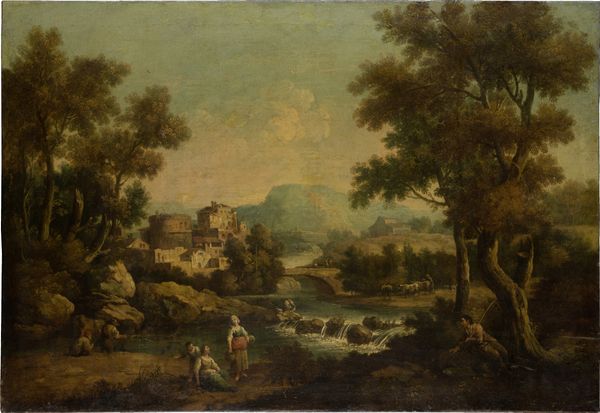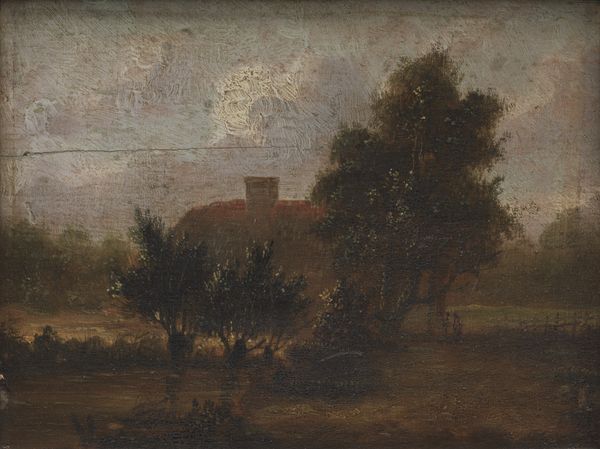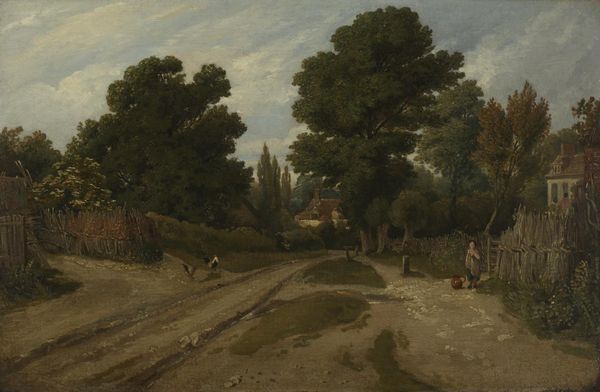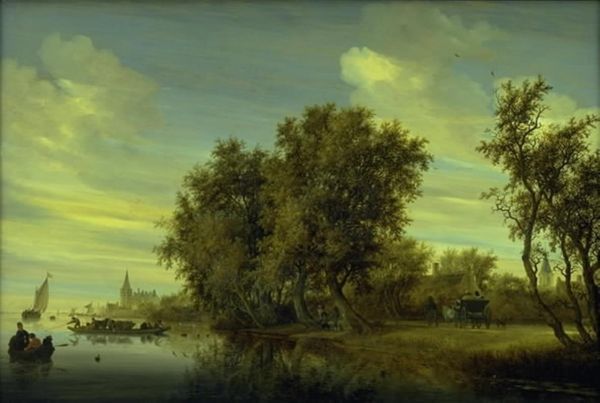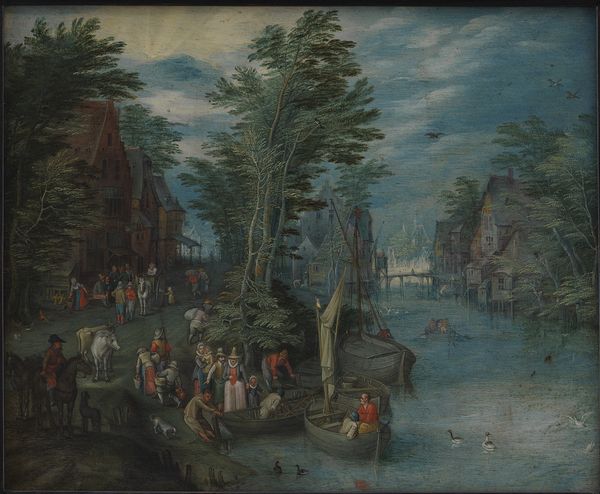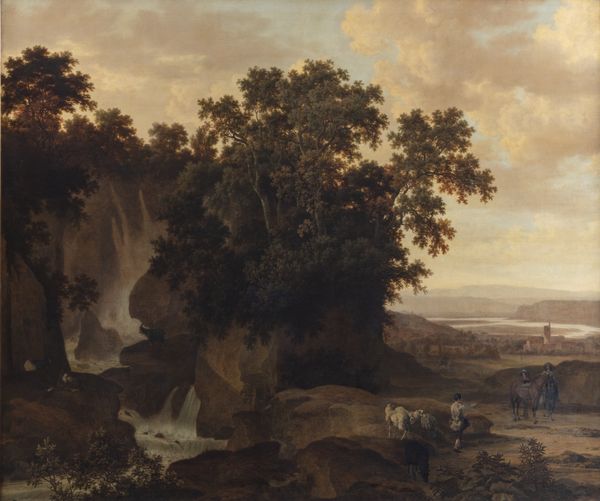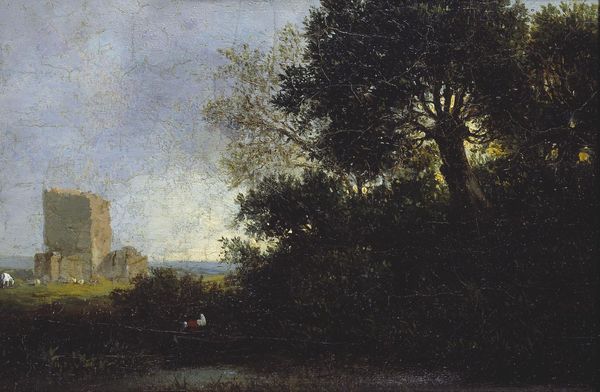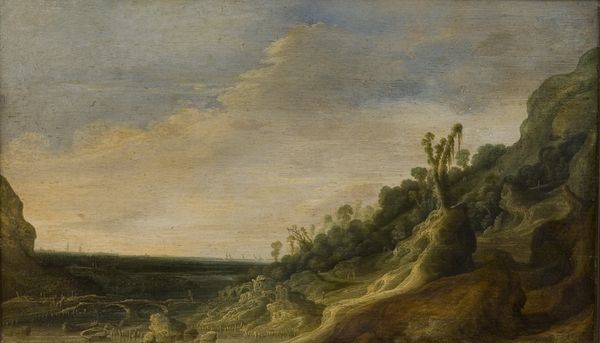
Copyright: Public Domain: Artvee
Editor: So, this is Arnold Böcklin's "Fiesole Villa by the Sea," painted in 1865 with oil paint, and likely outdoors considering it is a plein-air painting. There's a solitary figure, and something about the scene evokes a real sense of melancholic isolation, even longing. How do you interpret this work, especially considering its historical context? Curator: I see that sense of longing as connected to a wider socio-political frustration that emerged post-1848 revolutions. Böcklin paints during a time when grand narratives of progress had crumbled, leaving a void filled with disillusionment, especially for the middle class. The solitary figure becomes symbolic – alienated, contemplative, maybe even politically disengaged in this liminal space between land and sea. It is important to consider that he was of Swiss origin, with all of the socio-political considerations implied. What is your own reaction to this figure? Editor: I find the figure compelling, standing at the threshold of two worlds. The blowing trees hint at something beyond what can be observed, in terms of emotional state or an inner storm. The figure almost becomes an emblem of uncertainty, staring out towards the turbulent sea. Curator: Exactly! And what does it mean for this figure to be on the fringe, by the water? We can see that their socio-political background must surely weigh on the moment. Think about the history of Romanticism, then think about what this specific pose and background represents in this moment. Editor: That is so interesting - considering not only personal emotional experience, but larger-scale disenfranchisement shaping even these private moments. Curator: Yes, and the historical context adds depth to what we’re seeing and how we read this work, particularly within gendered and political lines. Editor: This is a totally different way of seeing this image. It has really expanded my perspective. Curator: Mine too. Thinking about what stands on the margin always leads to unexpected connections.
Comments
No comments
Be the first to comment and join the conversation on the ultimate creative platform.




